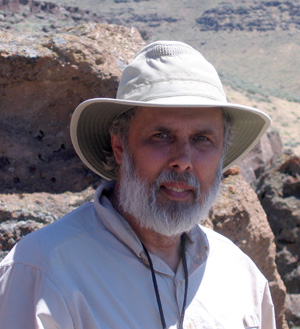|
|
Role of the Yellowstone Plume in the Initiation of Flood Basalt Volcanism and Basin and Range ExtensionVic Camp Wednesday, December 4th, 2013 |
||
|
|||
|
My main intent in this talk is to discuss the role of Yellowstone plume emplacement on Basin and Range extension, but the beginning of the talk will first focus on the nature of flood volcanism that formed the Columbia River Flood-Basalt Province. This province is the youngest, smallest, and best studied flood-basalt province on Earth and has been used as a model for the study of many other such provinces worldwide. The low-velocity zone beneath the Yellowstone caldera has been interpreted by several workers as a mantle plume extending into the lower mantle. Plate motion studies place the plume axis in the region of northern Nevada and SE Oregon at ~17-16 Ma. This age is contemporaneous with four major events: (1) initiation of Columbia River flood-basalt volcanism at 16.7 Ma, (2) early magmatism along the northern Nevada rift at 16.5 Ma, (3) initial rhyolite eruptions at the western end of the Snake River Plain hotspot track at 16.5 Ma, and (4) the initiation of large-scale extension in the northern and central Basin and Range at ~17-16 Ma. This initial, short-lived burst (16.7-15 Ma) of magmatism was concentrated along the Nevada-Columbia Basin magmatic belt (NCMB), a linear zone of dikes, mid-crustal intrusions, and volcanic centers that extends for >1000 km, from southern Nevada to the Columbia Basin of eastern Washington. Dike orientation along the belt suggests an apparent extension direction of 245-250o, but this trend lies oblique to the regional extension direction of 280-300o during coeval Basin and Range faulting (e.g., Colgan, 2013). These magmatic trends are not controlled by regional stress, but rather by magma overpressure and forceful dike injection with an orientation inherited from a deeper process in the sublithospheric mantle. The NCMB appears to be the surface expression of an elongated melt zone attributed to ascent of the Yellowstone plume through a propagating fracture in the in the Juan de Fuca plate. The broken remnant of the plate resides east of the magmatic belt at 300-600 km beneath eastern Nevada and western Utah. The southern half of mantle upwelling was emplaced beneath cratonic lithosphere with an elevated surface derived from an earlier period of crustal thickening. Having high gravitational potential energy with an increasing magnitude of intercontinental shear stress to the south, the high Nevadaplano was primed for collapse at the time of plume arrival. Plume impingement resulted in advective thermal weakening of the lithosphere, mantle traction and added buoyancy to the northern and central Basin and Range. Multiple forces were involved in crustal stretching, but plume impingement was the catalyst for the abrupt initiation of mid-Miocene extension leading to widespread collapse of the Nevadaplano. |
|||


